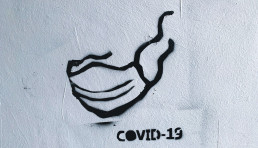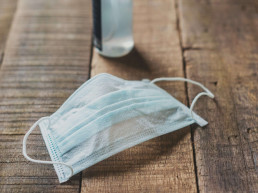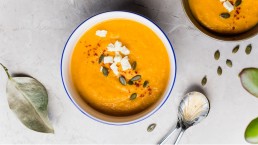Holidays in Poland in Covid times
Poland is open for visitors again. Covid-19 has turned our lives around and its consequences will keep on influencing our world in the upcoming months and years to some extent. While we all try to find our “new normal”, we’re again more on the move, traveling for work or pleasure – because traveling means discovering the world and living! How to do it right, what to watch out for and what to expect to stay safe and benefit from travel experiences after the pandemic?
Back on the track - with a mask
Poland is a member of the European Union and all the high health standards of the block apply to the country. Apart from that, Poland has decided on its individual means to limit the pandemic – similarly to neighboring countries – and Poles did well in exercising social distancing, limiting the scale of the overall pandemic stats, compared to other EU countries.
At this point, borders are open to most of the countries, international transfers as well. It is still obligatory to wear masks in shops and public spaces and people are encouraged to sanitise hands at every turn (it’s not obligatory to wear a mask on the street if you keep the distance of 1,5 m). Rules have become new habits: in public transportation and trains passengers are obliged to sit separately, the number of tables in restaurants is reduced in order to keep the distance, ect. Also all the public institutions, museums are open and every place follows new safety standards. This means that it is possible to visit all the most interesting places, provided you first check and follow all the Covid related restrictions (for details please refer to the end of this article!). In addition, temporary regional limitations may be introduced ad hoc (red and yellow zones).
Flexibility is the new normal
The pandemic came unexpected and proved we live in turbulent times, where stabilization and advance planning is not granted. Most of the service providers learned that lesson quickly and now offer more flexible cancellation policies or provide last minute services. Check the cancellation policy for your flights, hotel bookings or car rental – most likely at this point even if your trip would have to be postponed, you would be able to reschedule it without extra costs. At Around Poland for instance you will benefit from the option to reschedule your trip within 14 days if any unexpected COVID related events occur. In addition before your arrival you are getting a brief note on the key current safe requirements to follow, prepared upon official Polish authorities sources. And we – your local agents – are always 24/7 at your disposal during your stay in Poland – in case of any questions it’s easier to solve any issue with the assistance of the Polish speaking friend:) To find out more about the Covid-19 related policy for Around Poland guests please read “100% safety with Around Poland”.

Going local, turning green
After the lockdown most of us living in cities desperately waited for a simple walk in the park, afternoon in the countryside became a dream come true:) Pandemic reminded us that nature makes us happy and relaxed, and keeping social distance is easier outside! It’s the perfect moment to try a new traveling style that will not only be enjoyable but also safer in pandemic times. If flights are less reliable, maybe family car trips are an option within your reach? It’s a perfect time to focus on exploring nearby local areas and stunning nature sites. Going local & green makes a perfect combo! Variety of that kind of landscapes in Poland is huge, from white beaches at the north with Baltic sea, 1000 masurian lakes, estern vibes of wild and rural Podlasie, charming castles route meandering in rocky surroundings in Lower Silesia, stunning Jura Krakowsko-Czestochowska, majestic Tatra mountains and and so much more! Places where you may rest in silence and private atmosphere are within your reach.
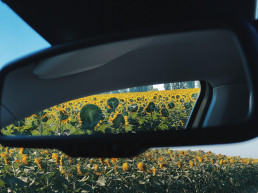
Trust us - it’s personal
Making sure that you may rely on someone when you need is crucial. Traveling requires trust, nowadays more than ever. Choose smaller companies and places, where you get to know the owner, name of the person that books your trip and you may simply talk and bond with. It’s no time for anonymous relations. And this is one of the foundations for Around Poland – we focus on tailor made, local and eco friendly trips just for you and your friends! And we have perfect partners for that. A true phenomenon has arised in recent years: agroturism or so called rural tourism – almost in every part of the country you are able to find charming, friendly and serving delicious cuisine houses run by locals for guests. Places opposite to the anonymous chain hotels, where the owner welcomes you in the middle of the night at your arrival and serves scrambled eggs in the morning.

Any assistance needed? We're here for you. Contact us via email: welcome@aroundpoland.eu, phone 0048 691 716 836 or Whatsapp (same number). Maybe you'd like to have a video call before your arrival? Let us know and see you in Poland!
More specific Covid related local measures for airports, hotels, restaurants and more below. Please note that all the information needs to be updated regularly – for the latest always refer to one of the recommended official sources like:
https://www.gov.pl/web/koronawirus/aktualne-zasady-i-ograniczenia (in Polish) and https://www.gov.pl/web/coronavirus/travel (in English).
General Covid -19 related rules in Poland apply to:
• Open spaces: the obligation to keep the physical distance of 1.5 m (if this distance cannot be respected, wearing a mask is mandatory)
• Closed spaces: the obligation to cover the nose and the mouth with a mask or a scarf in public transport, shops, cinemas, theaters, massage parlors, churches, public administrations.
Borders and international transport
• Flights between Poland and most of the EU countries operate normally, with a list of temporary exemptions that you will find here.
• Railways (PKP Intercity) provide international connections within the internal borders of the EU. International connections to Berlin, Vienna, Ostrava, Prague are available. More information: https://www.intercity.pl/miedzynarodowe, https://www.intercity.pl/en/
• International road transport (coaches, passenger cars, trucks) operates normally. There is no border control.
• When entering Polish territory, foreigners are NOT required to present a negative test for COVID-19, nor any other certificate.
Quarantine
• There is no compulsory fortnight for citizens of the European Union and Switzerland, for citizens of EFTA member states and for foreign students enrolled in Polish universities.
• Passengers entering Poland from countries affected by the flight ban are subject to quarantine, as are passengers arriving by plane from Belarus or Ukraine.
• Quarantine is mandatory if you have had contact with a person infected with COVID-19.
• In the event of a positive COVID-19 test result, the quarantine lasts ten days if you have no symptoms and thirteen days if you have symptoms. In this second case, the doctor may decide to extend it.
Airports
Poland is open to receive most of the flights from the EU and the world.
When arriving in Poland by plane, you should follow the sanitary rules like:
• Wearing a mask that covers the mouth and nose is compulsory in public spaces
• The social distance is 1.5 meters minimum
• Disinfectant gels are at your disposal at each stage of embarkation and disembarkation
• You do not need to take the COVID-19 test before arriving in Poland
• You may have your temperature taken on arrival or departure (medical staff at the airport take care of this)
Hotels & accommodation places
• In Poland, hotels have been open since May 4
• Hotel staff are made aware of and trained in health rules
• The rooms are cleaned according to the new sanitary instructions
• Often hotels are closed to visitors except for guests – people without reservation do not have access to the hotel
• In common areas, wearing a mask is compulsory (hallway, entrance, reception, etc.)
• You must disinfect your hands when entering – disinfectant gels are available at the entrance
• The hotel restaurants and bars are open and can serve meals: when you sit at the table and eat or drink, you can remove the mask
• As for the swimming pools and fitness rooms, they are also open – you can go without a mask
• Always follow the instructions of the hotel staff
Restaurants
• In all the bars and restaurants there must be a sufficient distance between the tables (around 2 m)
• Health regimes, eg. disinfection of tables after each customer, are maintained
• You must disinfect your hands when entering – disinfectant gels are available at the entrance
• You should cover your nose and mouth until you sit down at the table or when you go to the bathroom in a restaurant.
Transportation
All drivers (public transport, taxi, private drivers) must wear a mask
Wearing a mask is compulsory on board a bus, tram, train, car (private driver), boat, plane, etc.
As for public transport, seats are limited. How many people can board? As many people as there are seats (if there are only seats), or up to 50% of the total number of seats and standing
Guided tours: in the open space, wearing a mask is not compulsory, if the social distance is maintained at a minimum of 1.5 m
Culture sites
• Cultural institutions such as theaters, cinemas, concert halls, galleries and exhibition halls were opened from June
• From now on, visits are maintained individually or in small groups (the number of people in a group depends on the site visited)
• For certain cultural sites, tickets must be reserved in advance, for example through the website
• You must disinfect your hands when entering – disinfectant gels are available to you, usually at the entrance and at the reception
• You should cover your mouth and nose in an open space, when you cannot stay 1.5 meters from others, as well as in a confined space – for example in shops, on public transport
Tasty Poland
Polish traditional cuisine is one of the things that we are the most proud of! In connects us with our history, families and our land as it is reach in all different natural ingredients like vegetables, herbs, fruits and mushrooms!
“Tasty Poland” created by Around Poland is also a part of “Meet Poland” app – useful and complete guide for tourist visiting Poland available for free in App Store and Google Play.

Places and meals – regional ambassadors and gems
Wielkopolska region – gzik
As a simple peasant dish made of cheese from cow’s milk „gzik” is a traditional but still present in everyday life on many tables in western Poland. With history dating back to the XVIII century „gzik” became popular in Wielkopolska region – part of Poland with well-developed agricultural tradition. The perfect recipe? Just blend the curd cheese with sour cream, chives or onions with a pinch of salt and pepper. „Gzik” enjoys the close presence of potato – the king of Wielkopolska region cuisine! Together they will take you straight to the heart of Wielkopolska, and will make Wielkopolska its way to your heart and stomach.
Silesia – Silesian beef roulade (śląska rolada)
If it’s Sunday, you’re welcome to taste a traditional family’s dinner in Silesia – the housewife has just finished to prepare the beef roulade, potato dumplings are just about to boil and red cabbage is already chopped. The roulade, tightly filled with bacon, sour cucumbers, onion and mustard, gathers numerous families every week. No one will disobey nor change the Sunday perfect menu.
Podhale – Highlander oscypek cheese (oscypek)
Smoked cheese made of salted sheep milk produced exclusively in the Tatra region – the highest mountain range in the Carpathian Mountains and a natural border between Slovakia and Poland. The perfect place to taste Oscypek is Zakopane – a resort at the foot of the Tatra Mountains and traditional center of highlanders culture. Shaped in different decorative forms, smoked or roasted goes well with cranberries jam. It’s also great snack during a long mountain hike.
Podlasie region – potato cake (babka ziemniaczana)
House tables in Podlasie region are rich in all kinds of potato dishes. Potato cake is one of them. It is made of grated potatoes, eggs and onions with addition of bacon or sausage, served with a sauce of sour cream. So don’t get mislead by the name – it has little to do with sweet „cakes”. And those of you, who are curious of babka’s taste, may visit the World Championships in baking blood pudding and potato cake, which are being organised every spring in Supraśl – picturesque town near Białystok.
Zagłębie region – pieczonki
They are known under few different names, but basically “pieczonki” are made of the same few simple ingredients – potatoes, onions, bacon, sausage, salt and pepper, sometimes with addition of carrots or beetroot, covered with a leaf of cabbage. It is one of the simplest peasant dishes. So what’s so special about them? Well, the secret lies in process of cooking. Traditionally it is prepared on a campfire in a cast-iron pot with screw-lid, which is produced only in few places in Poland. That’s why “pieczonki” are little known outside southern part of Poland. Yet in Śląsk, Zagłębie and part of Małopolska Region they are quite popular. You may find even special spots for the campfire next to houses, so the neighbours could use them in the evenings.
Baltic seaside – Kashubian herring (śledź po kaszubsku)
Only few fishes in the Polish seaside’s menus may come directly from the Baltic Sea. Due to ecological struggle for the sustainable development and protection of the sea fauna extensive fishing is not allowed. But there’s plenty of herring in the waters, so you can eat it with no limits in all forms of its appearance. Most unique Polish variant is the Kashubian herring, prepared according to the same receipt for over a hundred years. Basically, these are herring fillets coated with flour, fried with onion and served with marinade made of vinegar, honey and bay leaf. Though for decades it was meant as the food for the poor, today it is served as spicy appetizer usually with icy glass of vodka.
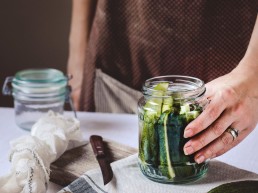
Vege, vegetables & herbs
Potato pancakes (placki ziemniaczane)
Polish cuisine is rich in all sorts of potato dishes and potato pancakes are among the very popular ones. These are fried pancakes of grated or ground potato with an addition of flour and eggs, garlic and spices. Spoon of sour cream on the top makes a perfect finishing – although there are many who like it better with sugar…. Better try both!
Cabbage roll (gołąbki)
Who doesn’t remember grandma’s cabbage rolls? Well, most of us do and it’s one of the typical childhood memories. Every spring when first young cabbage appears on market, its young leaf serve as a basis for the best rolls filled with a mixture of rice, pork, and beef stewed in tomato sauce. Every family has their own version but few things stay the same – this dish requires quite a time to prepare (as from start to finish it may take even 3 hours) and great love for grandmas’ secret recipes.
Cucumber soup (zupa ogórkowa)
This soup may be a surprise for most of you! It is one of the less typical tastes you will experience as it has very little to do with the fresh cucumber. It is made of sour, salted cucumbers (dill pickles), which grant its unique strong taste. In addition potato pieces will make you feel satiety. Best form homemade sour pickles. Stay a very popular soup in Poland all year long.
Sauerkraut (kapusta kiszona)
Simple as this: the pickled cabbage. It is main ingredient of numerous traditional Polish dishes, like hunter’s stew (bigos) or cabbage soup (kapuśniak). But we encourage you to try it raw – as “surówka”, without meat nor any additional ingredients, just roughly chopped with some fresh carrots. In eastern regions of Poland you can also have it served braised with mushrooms and withe beans. Some Poles consider it as traditional dish exclusively for Christmas Eve, but vegetarians can enjoy it on daily basis as simple, delicious course, easy to prepare and very healthy.
Sour pickles – pickled cucumber (ogórki kiszone)
This is absolutely one of Polish classics. Fresh, small cucumbers are pickled with garlic, horseradish root and dill, poured over with salty water in ceramic container or glass jar and put away in cold, dark place for about a week. Some also add oak leafs for more distinguish taste. A less sour version of the healthy nibble is pickled few days shorter and called “małosolne” (“low-salty”). Both serve not only as perfect appetizer accompanied with herring and vodka, but also as ingredient for salads and other Polish classic – the “zrazy” (beef roulades).
Ruthenian dumplings (pierogi ruskie)
There is at least a dozen or so of different types of dumplings in Poland, varied from sweet ones, with fruit fillings of blueberries or cherries, to salty and spicy ones, made with sauerkraut, meat or mushroom fillings. To have it made perfect like from grandmother’s kitchen, they need to be stuffed well with the filling inside a very thin dough at the same time. One of the most popular variants is “pierogi ruskie” (the name originates from “Ruthenian” – not “Russian”). They are filled with fresh curd cheese and mashed potatoes. Yet vegetarians should beware, since some cooks add also pork scratchings to the filling. So better ask before ordering!
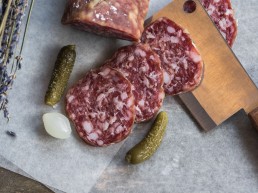
Meats & Fish
Hunter’s stew (bigos)
Perfect for those of meat-lovers, who got exhausted after a long day of sightseeing or hiking, especially during cold days. Hunter’s stew blends chopped meat of various kinds: pork, venison, beef, veal and sausage stewed with cabbage, sauerkraut and mushrooms. Numerous herbs and spices like caraway, cloves, garlic, marjoram, mustard seeds, nutmeg, paprika and thyme enrich its taste. Sometimes is gets slightly sweetened in an unexpected way – with prunes or plum butter for example. With a great variety of ingredients bigos is a Polish national dish, strongly related to our culinary history and hunting tradition.
Sour bread soup (żurek)
The soup owns its peculiar taste to “zakwas”, which is made of rye bread mixed with water and slightly fermented. Its simple preparation is time consuming, so in Poland it’s easy to buy ready “zakwas” in most grocery shops. This absolutely unique taste is one of the Polish specialties available more or less everywhere in menus all year-round. But be careful for details. Sour, salty, and creamy żurek is served with a range of different ingredients: with chunks of ham, sausage (often white), and potatoes or with hard-boiled egg. Believe us, this soup is marvellous in contrary to its name pronunciation in Polish.
Pork cutlet (kotlet schabowy)
Basically, it is Polish version of “vienner schnitzel”. In the traditional manner, it should be coated with breadcrumbs and fried on lard. Schabowy is usually served with potatoes and browned or pickled cabbage. It came to Poland in the 19th century, but became popular after World War II during the communist time. Now extremely popular in bars and restaurants, you may order it either in a fancy restaurant or in cheap “milk bars” – former state-owned bistros still present in Polish cities. And there is a long list of places where you may order a pork cutlet size of the large plate!
Meat broth – chicken soup (rosół)
Flu-curing properties are not the only reason for „rosół” to be the most beloved of all the Polish soups. With its perfectly simple three basic ingredients being: water, vegetables and meets – chicken but also beef – the soup is both the perfect meal and the base for other soups to be prepared from “rosół” leftovers (like “second day” tomato soup for example). Definitely a must – try in Poland, if you are lucky, while visiting parents for the Sunday dinner in almost every Polish home.
Tripe soup (flaki)
You would probably not guess what this soup is made of. And once the secret is revealed, not everyone is brave enough to try it… But many Poles do: cleaned strips of beef tripe and few spices like pepper, nutmeg, salt and marjoram form the taste of this stew like soup. As it is quite high calorie soup it was often served during the long wedding parties later in the night –to distance the unavoidable hangover. Now you may try it in most “milk bars” and vodka & herring places in bigger cities served with a slice of bread.
Blood sausage (kaszanka)
Its Polish name does not reveal much of what you really get – the name refers to only one of its ingredients – groats – while “kaszanka” is a Polish black pudding made also of blood and giblets: liver, lungs, pork crust and fat. It was originally made to use up the scraps after slaughtering a pig. Known under different names in many nations’ cuisines in Poland it is served heated on a grill during weekends with family and friends.

Beverages & Spirits
Żubrówka
Żubrówka or Bison Grass is a rare herb growing in wet meadows of Europe and Asia. It is popular for its therapeutic effect and has been protected in Poland for over five decades. But in Poland it is most famous not as an herb itself but type of vodka with a distinctive sweet aroma with a hint of anise! Produced from centuries, Żubrówka is most characteristic for Podlasie region and Białowieża Forest – the last and largest remaining parts of the immense primeval forest and home to the largest population of wild bison in the world. Best way to serve Żubrówka? Cool vodka with apple juice called “apple pie” works every time and best of course after Bison safari in Białowieża!
Kvass (kwas chlebowy)
Kvass is a traditional fermented beverage commonly made from black or regular rye bread with low alcohol content (maximum 1%). It has been a common drink in Eastern Europe since at least Middle Ages. It may be flavoured with fruits such as strawberries and raisins or with herbs such as mint. Delicious!
Birch juice (sok z brzozy)
Birch juice is the sap from a birch tree, a water-like sweet liquid. The only time you can collect the juice is during the 20 day period from the middle of March to the beginning of April – that’s when the core of the tree is filled with juice. A small birch can produce up to 5 litters of juice per day. Fresh birch sap can be preserved for 5-6 days at most. It contains sugars, proteins, amino acids and enzymes.
Lubuski Region wines
The sunny Lubuski Region and Zielona Góra city (Green Mountain) have more than 700 years of winemaking tradition – there was a time when small vineyards were in every house in the city. Now, years later, viticulture began to recover and once again has a chance to become a showcase of the region. Developed and run by enthusiasts, vineyards produce not only wine but often focus also on delicious local cuisine and local products like honey.
Compote (kompot)
This sweet beverage prepared of fresh season fruits like apples, cherries, strawberries, pears or rhubarb may be served hot or cold, depending on tradition and season. It stays typical dinner drink in many Polish homes. Unfortunately it is less and less popular in bars except for milk bars when you often may get a glass of compote for free as an extra to your meal.
Local beers
If your first thought about Polish alcohol would be vodka – you are … wrong! Poles tend to drink more and beer these days and Polish regional breweries experience a renaissance. And that is a great come back to the good old times. Before the World War II in every medium-sized town at least one brewery was functioning, in Cracow – even up to 50! Nowadays dozens of new brands and different types of beer come into market every year and travelling to Poland may be a perfect opportunity to track your favourite ones.
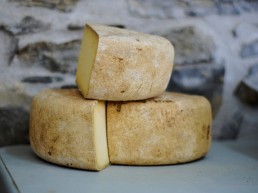
After dinner – cheeses and desserts
Kutia
Kutia is a sweet grain pudding with the addition of ground poppy seeds and honey, sometimes with nuts and raisins. It is one the traditional twelve-dish Christmas Eve supper. Extra sweet kutia is as time consuming during the preparation as during eating and chewing different seeds chunks. The only chance to taste it would be probably Christmas time in Poland. But the chance is real as in every home during the Christmas Eve there is a place waiting at the table for a stranger.
Tree cake (sękacz)
The average tree cake is about half a meter in height, weighs more than 3 kg and reminds a little tree! Cake whose tradition dates back to the culture of the Balts now is regional specialty of the Podlasie region. It is baked over the fire on a special rotating roller. It is a sponge cake with visible layers, covered with icing or chocolate or eaten without any addition or decoration. Rumour has it that it is known and appreciated also in Japan!
St Martin’s pastry (rogale świętomarcińskie)
Local delicacy in Poznań, Wielkopolska. Saint Martin pastry is crescent-shaped sweet rolls filled with nuts, white poppy seeds and cream and sugar glaze. The tradition of baking those pastries in Poznań dates back to the nineteenth century when pastry makers responding to the call of the priest started to prepare pastry for poor people. Nowadays on St. Martin’s Day on November 11th the city is radiant, full of music and events and tones of Saint Martin pastry! Available in Poznań all year long.
Polish eggnog (kogel mogel)
Kogel mogel as a Jewish dessert dates back to 17th-century Jewish communities in Central Europe. But in Poland it became very popular during the last five decades of communist times when there were no ready-made sweets available in shops. For a perfectly simple kogel mogel all you need is an egg yolk and sugar – beat till it is light and fluffy in result after few minutes you will get an extra creamy and sweet desert.
Koryciński cheese (ser koryciński)
It is a rustic-style local cheese from Korycin from eastern Podlasie region made from cow’s milk. It is considered to be the oldest polish cheese and one of Poland’s best-known dairy products. Local legend has it that Korycin residents learned the production process from Swiss soldiers during the Polish-Swedish war in XVII century. There are several variations of its flattened spherical shape depending on what spices and herbs have been added, for example mint, dried mushrooms, garlic or olives.
Wielkopolska region fried cheese (ser smażony)
This cheese is still made and most popular in Wielkopolska, the central-western region of Poland. According to a local tradition as cows’ milk production increased in the region people sought ways of making the fresh curd cheese made from milk last longer. That is how they came up with the recipe for the fried cheese. The unique flavour and smell comes from the ripened curd cheese and its frying. The cheese comes in two varieties: natural and caraway and you may try it in Poznań – region’s capital.

